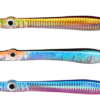Metal Jig Lure Fishing Jigs Saltwater Metal Long Casting Shore Jigging Fishing Lures
Video atskaņotājs
Fishing enthusiasts know that the right lure can make all the difference when it comes to landing that prized catch. Among the various types of fishing lures, metal jigs have gained immense popularity for their versatility and effectiveness in attracting a wide range of fish species. In this article, we’ll explore what metal jig lures are, how to use them effectively, and tips to maximize your fishing success.
Papildu informācija
| Krāsa | optional |
|---|---|
| Material | iron, Lead, metal |
| Weight | 60g,80g,100g,120g,150g,200g |
| Model | TX-13 |
| Package | PVC Bag |
Product Details:
Introduction
Metal jigs are among the most versatile and effective lures in an angler’s toolkit. Designed to mimic the movement of baitfish, these lures can target a variety of species in different environments, from deep waters to shallower, rocky structures. This guide will cover everything you need to know about metal jigs, from selecting the right one to using effective techniques. Whether you’re a beginner or an experienced fisherman, understanding how to work metal jigs can take your fishing game to the next level.
What Are Metal Jigs?
Metal jigs are weighted lures made primarily from metal, giving them the weight needed for deep-water fishing and allowing them to reach the bottom quickly. Their slim, streamlined shape mimics the appearance and action of baitfish, which makes them appealing to predatory fish. Metal jigs come in various sizes, shapes, and colors, each designed to suit different conditions and target fish species.
These jigs are especially popular for saltwater fishing but are also effective in freshwater for species like bass and pike. Their simple yet versatile design allows for a range of presentations, making them a staple in the fishing world.
The Benefits of Using Metal Jigs
- Dziļuma kontrole: Metal jigs are ideal for reaching deeper water where fish are more likely to be hiding. They sink quickly, allowing you to cover various depths by adjusting how long you let them fall.
- Realistic Action: The heavy, compact design of metal jigs creates a fluttering or wobbling action that closely resembles injured baitfish, attracting the attention of predatory fish.
- Versatility Across Species: Whether you’re targeting tuna, snapper, or grouper in saltwater or bass in freshwater, metal jigs can attract a wide range of fish species, making them an excellent all-purpose lure.
Choosing the Right Metal Jig for Different Conditions
Selecting the right metal jig can make all the difference in your fishing success. Here’s how to choose:
- Weight: Heavier jigs are best for deeper waters and strong currents, as they sink faster and stay stable. Lighter jigs are suited for shallower waters and are more effective when fish are closer to the surface.
- Krāsa: In clear water, bright or reflective colors like silver, white, or blue can catch a fish’s attention from afar. For murky or deeper waters, darker colors and UV-coated jigs can make the lure more visible to fish.
- Shape: Flat-sided jigs flutter more on the fall, creating an erratic action, while slender, streamlined jigs are better for faster retrieves. Match the shape to the preferred style of fishing and the type of water you’re fishing in.
Effective Techniques for Fishing with Metal Jigs
- Vertical Jigging: One of the most popular methods for fishing with metal jigs, vertical jigging involves dropping the jig straight down to the bottom and lifting it up and down. This action creates a flashing movement that attracts fish. After a few jigs on the bottom, retrieve it upwards, jigging through the water column.
- High-Speed Jigging: In this technique, you reel in the jig at a fast pace while giving the rod slight jerks to create an erratic, fleeing movement. High-speed jigging is excellent for targeting fast-moving species like tuna and mackerel.
- Slow-Pitch Jigging: A newer technique, slow-pitch jigging involves a slower, rhythmic retrieve, allowing the jig to flutter down gently between pulls. This approach is particularly effective for bottom-dwelling fish, as it keeps the jig in the strike zone longer.
Best Situations for Metal Jig Fishing
- Deep-Water Fishing: Metal jigs are ideal for deep-sea fishing, where they can easily reach and attract bottom-dwelling fish like snapper and grouper. Their weight and action allow them to get down quickly, covering the water column.
- Fishing Around Structures: Areas with structures like reefs, shipwrecks, or rocky bottoms are perfect for metal jigs. Fish tend to hide in these areas, and the jig’s action can draw them out for a strike.
- Fast-Current Areas: In strong currents, metal jigs remain stable and maintain their action, making them a good choice when other lures might be too light to control.
Tips for Maximizing Success with Metal Jigs
- Experiment with Retrieval Speeds: Varying your retrieve speed can make a big difference. Try alternating between fast and slow retrieves, as well as different jigging styles, to see what the fish respond to.
- Choose a Sensitive Rod: A rod with good sensitivity helps you feel subtle bites and maintain control of the jig, making it easier to detect strikes, especially in deeper water.
- Watch for Line Changes: If your line suddenly goes slack while the jig is dropping, it might mean a fish has struck. Be ready to set the hook immediately to avoid missing the fish.
- Match the Hatch: If you know what type of baitfish are in the area, use a jig that mimics their color and size. This can make your lure more enticing and increase your chances of success.
Common Mistakes to Avoid with Metal Jigs
- Using the Wrong Weight: Choosing a jig that’s too light or too heavy for the water depth or current conditions can hinder its effectiveness. Select a weight that will allow the jig to reach the target depth and hold in place, even in currents.
- Not Adjusting for Structure: Metal jigs can get snagged on structures if they’re left on the bottom too long. To avoid losing your lure, keep your jig moving and avoid letting it settle directly onto rocky or weedy areas.
- Failing to Sharpen Hooks: Over time, metal jig hooks can become dull or bent. Make sure your hooks are sharp and in good condition to maximize your chances of a successful hookset.
Metal jigs are powerful tools for anglers looking to target a variety of species in different environments. Their unique design, coupled with the right technique, can make them an invaluable asset in your fishing arsenal. By understanding the basics of choosing and using metal jigs, experimenting with different techniques, and avoiding common mistakes, you can significantly improve your fishing results. So next time you head out, pack a few metal jigs and get ready to experience a versatile and highly effective way to fish!
Saistītie Produkti
-
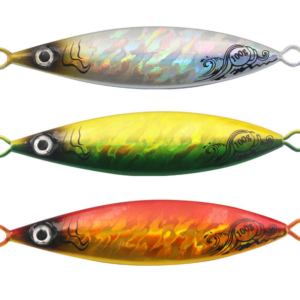
Small Metal Lead Fishing Lure Slow Jigging with Hooks for Bass Shark and Marlin in All Waters
-
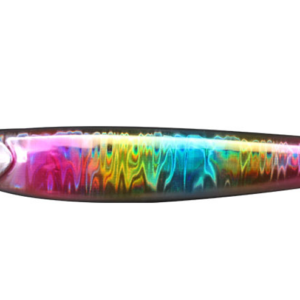
25g 45g 55g 75g Sardine Slider Metal Jig Lure Long Casting Fishing Jig Slow Pitch Jigging Bait
-
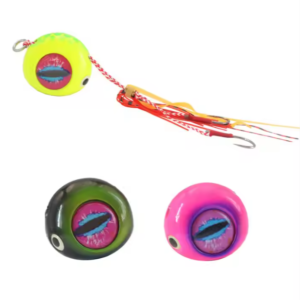
Fishing Running Sliding Replace Jigs Saltwater Fishing Lure Madai Jig
-
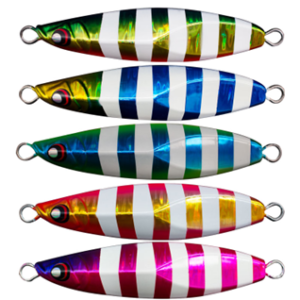
Hard Metal jig Lead Fish Lure 40g 60g 80g 100g 100g




